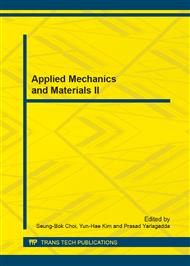p.259
p.265
p.271
p.277
p.281
p.285
p.295
p.299
p.303
An Immersed Boundary Method for Compressible Flows with Complex Boundaries
Abstract:
An immersed boundary method based on the ghost-cell approach is presented in this paper. The compressible Navier-Stokes equations are discretized using a flux-splitting method for inviscid fluxes and second-order central-difference for the viscous components. High-order accuracy is achieved by using weighted essentially non-oscillatory (WENO) and Runge-Kutta schemes. Boundary conditions are reconstructed by a serial of linear interpolation and inverse distance weighting interpolation of flow variables in fluid domain. Two classic flow problems (flow over a circular cylinder, and a NACA 0012 airfoil) are simulated using the present immersed boundary method, and the predictions show good agreement with previous computational results.
Info:
Periodical:
Pages:
281-284
Citation:
Online since:
December 2013
Authors:
Price:
Сopyright:
© 2014 Trans Tech Publications Ltd. All Rights Reserved
Share:
Citation:


